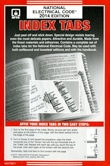Description
If your job involves flammable and combustible liquids, updating to the 2012 NFPA 30 is your first priority.
Enforceable under OSHA and many state and local regulations, NFPA 30: Flammable and Combustible Liquids Code is the best practice document widely used in industry and by insurers. The 2012 edition includes the latest and most complete criteria you need to protect your facility by ensuring safe storage, handling, and use of flammable and combustible liquids.
Major changes respond to newly identified risks:
- New provision requires that Class II and Class III liquids stored, handled, processed, or used at temperatures at or above their flash points follow all applicable requirements in the Code for Class I liquids, unless an engineering evaluation deems otherwise.
- An annex item explains that the use of spark-resistant tools must be evaluated on a case-by-case basis.
- In response to U.S. DHS rules requiring security/vulnerability assessments for high-hazard facilities, new Section 6.10 and an accompanying Annex H have been added to address management of facility security by means of a mandatory security and vulnerability assessment. Annex H provides an outline of a suggested assessment process.
- New annex guidance covers selecting a safe location to which a flammable liquids storage cabinet may be vented, and selecting a safe location to which a flammable liquids dispensing area may be vented.
- Provisions for flammable liquids storage cabinets incorporate more extensive marking requirements.
- Revised Table 9.9.1, Fire Resistance Ratings for Liquid Storage Areas, indicates that no fire resistance rating is required for separation walls for accessory use areas of small floor area.
- Revised Section 13.3 more clearly establishes the required separation between detached unprotected liquids storage buildings and both protected and unprotected exposed properties.
- Numerous minor amendments have been made to clarify application of the provisions of Chapter 16, Automatic Fire Protection for Inside Liquid Storage Areas.
- New Subsection 17.3.7 has been added to address process vessels used to heat liquids to temperatures at or above their flash points, as suggested by investigations conducted by the U. S. Chemical Safety and Hazard Investigation Board.
- New provision clarifies that tightness testing is not required for an interstitial space of a secondary containment tank that maintains factory-applied vacuum.
- A note and annex item for Table 22.4.2.1, Minimum Shell-to-Shell Spacing of Aboveground Storage Tanks, explain the term “sum of adjacent diameters” and its determination.
- Changes provide additional guidance on handling floating roof pontoons that have been breached by liquids or vapors.
- The Code no longer allows the use of water ballast to secure underground tanks in areas subject to flooding.
- Use and installation of alcohol-based hand rub dispensers are now exempted from the Code.
- Revised definitions for the various types of building occupancies correlate NFPA 101®: Life Safety Code®.
Get the criteria you need to design facilities for better protection, comply with sprinkler requirements, and use safe operating practices.
Product Details
- Published:
- 06/20/2011
- ISBN(s):
- 9781455900916
- ANSI:
- ANSI Approved
- Number of Pages:
- 150




